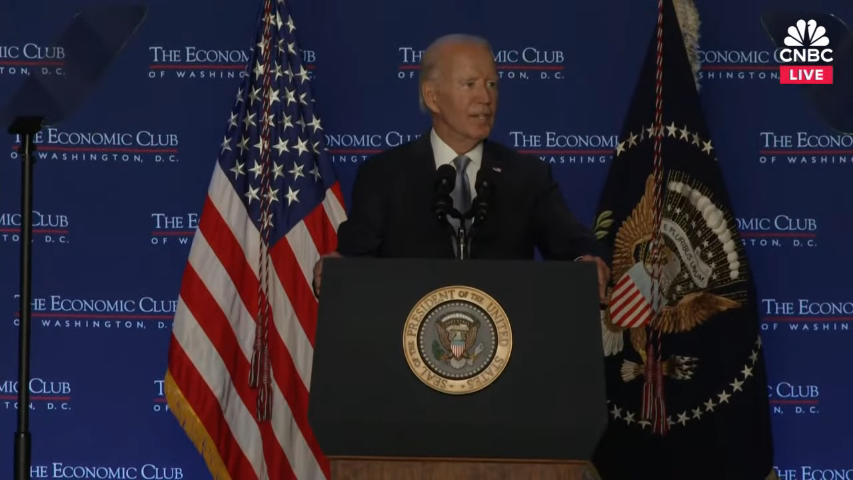
The president is no longer running for re-election, but he’s still talking up the progress manufacturing has made under his watch.
While a stream of scandalous political stories broke on Thursday and many of us were busy reading ’em, President Joe Biden was addressing the Economic Club of Washington.
The media isn’t following the sitting president nearly as much since he ended his re-election bid and threw his support to Vice President Kamala Harris. His speech generated headlines that focused on his measured praise of the Federal Reserve’s rate cut.
But Biden actually spent most of his 30-minute remarks not talking about the rate cut but his administration’s economic record – and this, of course, included mention of the manufacturing sector. So let’s do a little fact-checking of some key manufacturing-related lines!
“On our watch, factory construction is at a record high. It increased 210 percent. On the other team’s watch, factory construction barely increased 2 percent.”
Factory construction is indeed booming. This chart was built on data compiled by the U.S. Census Bureau:

This reflects the economic environment that has been created in the United States in recent years. Industrial policies – passed by Congress and signed by Biden – have been enacted to bring semiconductor chip and clean energy manufacturing stateside, and they were preceded by a $1.2 trillion infrastructure bill that updated and expanded federal Buy America requirements. Private investment has responded with a lot of greenfield factory construction to get a cut of all that action and access to those procurement markets.
“You know, it takes time to build these factories,” said Biden on Thursday, talking about this investment. “But the number of construction workers is way up, and they’re making good salaries — already creating tens of thousands of jobs in construction facilities. The American public is going, ‘Well, where’s all this going, Biden?’ Because they expected this to happen overnight. You got to build the factories first.”
“On my watch, we’ve created over 700,000 manufacturing jobs. (Trump) lost 170,000 manufacturing jobs in four years.”
This one’s not wrong, but it’s not right either. I’d call it misleading.
Yes, manufacturing employment picked up since Biden assumed office in January 2021. But, according to the data compiled by the U.S. Bureau of Labor Statistics, the economy has only gained about 561,000 factory jobs. That’s not nothing, but it’s not 700,000, either.
Meanwhile, the data shows that during President Donald Trump’s term from January 2017 to January 2021 the American economy shed 178,000 factory jobs. Which it did! But none of this happened in the vacuum; the interregnum between administrations is precisely when the coronavirus pandemic was hitting and the global economy nearly ground to a halt. You can see it here in this chart.
Manufacturing employment during Trump’s term edged steadily up until Covid-19 arrived in the United States in early 2020, when it fell off a cliff. That early growth, though, was hardly world beating. Here’s that same chart with a longer timeline:
As you can see, the economy was adding factory jobs at roughly the same clip under as it had during most of the eight years of Trump’s predecessor, former President Barack Obama. Under both they were only inching back up, after a steep decline that began with normalizing trade relations with China in 2000 that reached its nadir after the financial crisis of 2009. But Obama didn’t shape a major part of his pitch around “bringing all the jobs back.”
“On my watch, the trade deficit with China declined to its lowest level in a decade. On his watch, the trade deficit with China soared.”
This is the last line we’ll look up, and it’s easy to find, too. It’s true, depending on how you look at it. First, Biden isn’t talking about the trade in goods and/or services here but specifically in goods – physical products manufactured and sold. In 2023, the goods trade deficit with China was indeed the lowest it has been in a decade: Only $279 billion. The year before that, however, it was $382 billion. And $352 billion in 2021. For a myriad of reasons, the bilateral goods trade between China and the U.S. is deeply imbalanced and likely to remain that way.
For what it’s worth, though: the same annual deficit under Trump near dipped below $308 billion and was almost $420 billion in 2018. And that’s the all-time high.
Just some food for thought! Here’s the whole speech for those inclined to watch it:

